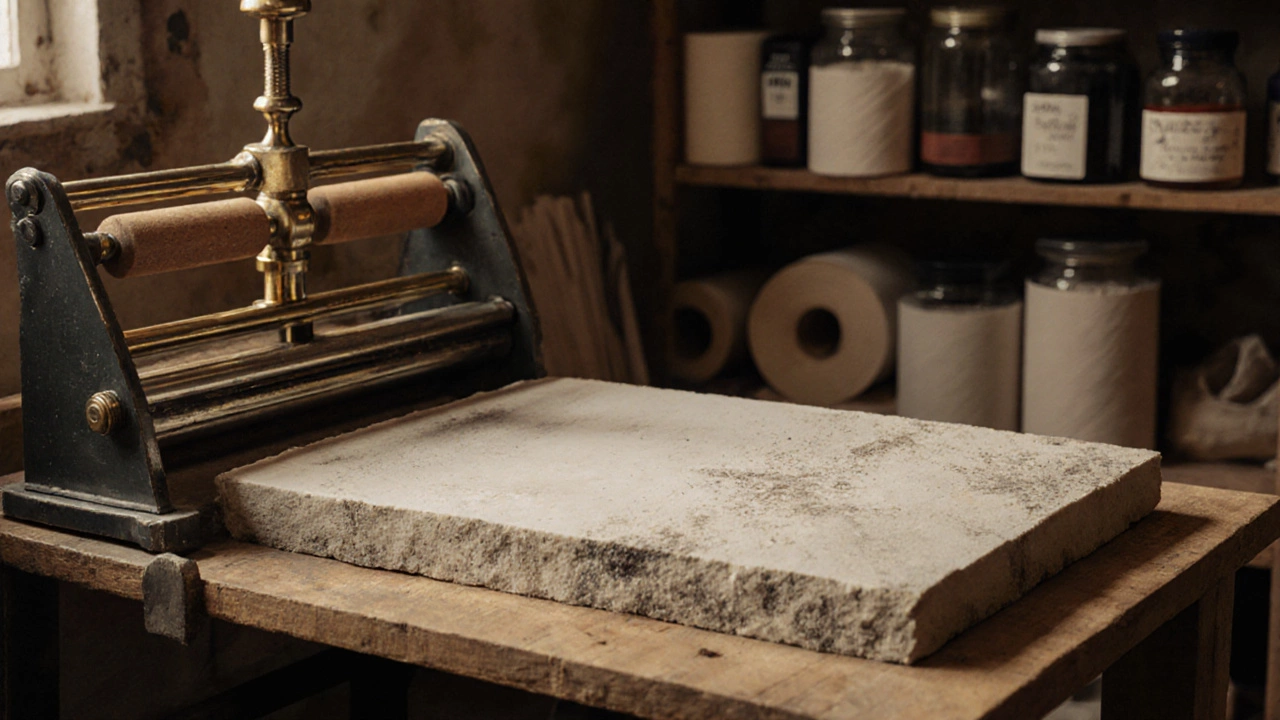Lithograph: Everything You Need to Know About This Classic Printmaking Method
When working with Lithograph, a planographic printmaking process that uses chemically treated stone or metal plates to transfer ink onto paper. Also known as stone printing, it blends chemistry, pressure, and artistry to create repeatable images. Lithograph belongs to the broader world of printmaking, a category that includes techniques that reproduce artworks via various inks and surfaces. Within printmaking, etching, which uses acid‑bitten metal plates, offers a line‑focused contrast to lithograph’s tonal richness. Another close cousin is screen printing, a stencil‑based method that excels with bold colors. These methods share a core predicate: they require specialized tools—plates, rollers, inks, and presses—to translate an artist’s design onto paper. Understanding these connections helps you see why collectors often value a lithograph’s subtle gradations and why museums group it with other print media in exhibitions.
Techniques, Tools, and Contemporary Relevance
Creating a lithograph starts with drawing on a limestone or aluminum plate using greasy crayons or ink. The surface is then treated with a chemical solution that makes the drawn areas oil‑friendly and the rest water‑friendly. When the plate meets damp paper under a press, ink adheres only to the greasy parts, reproducing the original image. Key tools include a grained stone or metal plate, a lithographic press, grease pencils, and a developer solution. Artists often combine lithography with modern trends—AI‑generated designs, eco‑friendly inks, or mixed‑media collages—to keep the medium fresh. This crossover shows up in the Top Contemporary Art Movements Trending in 2025 article, where lithographs appear alongside street art and digital creations, highlighting a resurgence of tactile print processes in a digital age.
The market side is equally intriguing. Lithographs are typically more affordable than unique paintings but still command respect because of the skill and equipment involved. Galleries look for factors like edition size, artist reputation, and provenance—much like they do for oil paintings or sculptures discussed in our “What Galleries Look for in an Artist” guide. Knowing how to price a lithograph, assess its condition, and understand edition numbering can help both creators and buyers navigate this niche market effectively.
Below you’ll find a curated list of articles that dive deeper into related topics—portrait painting basics, oil‑painting size trends, the spatula technique, and even the hardest art styles to master. Together, they paint a full picture of the artistic ecosystem surrounding lithography, from material choices to market strategies. Explore the collection to sharpen your skills, discover new ideas, and see how lithograph fits into the broader creative landscape.
